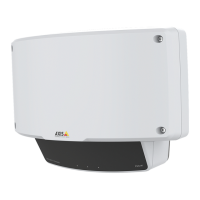
Do you have a question about the Axis D2110-VE and is the answer not in the manual?
| Input voltage | 8 - 28 V |
|---|---|
| Power source type | DC |
| Power consumption (typical) | 10 W |
| Detection distance | 85 m |
| Operating frequency | 2405 - 2425 MHz |
| Connectivity technology | Wired |
| Certification | EN 300440, EN 301489-1, EN 301489-51, EN 62311, FCC 15 C, ANATEL, AS/NZS 4268, ICASA, IFETEL, MIC, MoC, NCC, RSS-210 EN 55032 A, EN 55024, EN 61000-6-1, EN 61000-6-2, EN 61000-6-4, FCC 15 B A, ICES-3(A)/NMB-3(A), KC KN32 A, RCM AS/NZS CISPR 32 A, VCCI B, EAC IEC/EN/UL 62368-1, IEC/EN/UL 60950-22 IEC 60068-2-1, IEC 60068-2-2, IEC 60068-2-6, IEC 60068-2-14, IEC 60068-2-27, IEC 60068-2-78, IEC/EN 60529 IP66, IEC/EN 62262 IK08, NEMA 250 Type 4X |
| Product color | White |
| Detection angle | 180 ° |
| Installation height (max) | 3.5 m |
| Storage temperature (T-T) | -40 - 65 °C |
| Operating temperature (T-T) | -40 - 60 °C |
| Operating relative humidity (H-H) | 10 - 100 % |
| Quantity per pack | 1 pc(s) |
| Manual | Yes |
| Depth | 206 mm |
|---|---|
| Width | 285 mm |
| Height | 152 mm |
| Weight | 2400 g |
Defines two radar profiles: Area monitoring and Road monitoring.
Provides guidelines for installing the radar, considering coverage and interference.
Details the horizontal coverage and detection range for humans and vehicles.
Explains how to install multiple radars for extended coverage and manage interference.
Provides visual examples of radar installations for various scenarios.
Discusses installing multiple radars facing each other, distances, and grouping.
Shows side-mounted and center-mounted examples for road monitoring.
Specifies detection range for vehicles at optimal installation height.
Guides on locating the device using IP utility or device manager.
Instructions for accessing the device's web interface.
Steps to set a secure password for initial login.
Recommendations for creating and maintaining strong passwords.
Explains how to calibrate the radar based on mounting height.
Details on uploading and calibrating a reference map for better visualization.
Defines scenarios (include zones) and exclude zones for motion detection.
Instructions for configuring network storage for recordings.
How to record and play back video directly from the radar.
Guides on creating rules for triggering actions based on conditions.
Displays time sync, ongoing recordings, and device information.
Link to the maintenance page for firmware upgrades.
Configuration for radar transmission, channels, mounting height, and coexistence.
Settings for detection sensitivity and radar profiles.
Creating scenarios with triggering conditions and detection settings.
Synchronizing device date/time with NTP servers.
Configuring IPv4 and IPv6 network settings.
Managing certificates for secure network access.
Adding, managing, and assigning roles to users.
Creating rules and defining conditions and actions for events.
Configuring network shares for file storage.
Setting up and configuring the MQTT client for IoT integration.
Managing SD card settings, including formatting, encryption, and wear level.
Configuring digital input/output ports for external devices.
Resetting settings to factory default values, retaining specific configurations.
Instructions and options for upgrading the device firmware.
Performing validation to identify installation problems and manage objects.
Checking for false detections and correct symbol/direction of travel.
Final tests for validation, including setting trail lifetime and walking the coverage border.
Information on video compression formats like Motion JPEG and H.264/H.265.
Managing bandwidth consumption using variable or average bitrate.
Diagrams and labels for product components and LEDs.
Details on network connectors and PoE out.
Information on using the I/O connector for external devices and its pinout.
Procedure to reset the device to factory default settings.
Instructions and options for upgrading the device firmware.
Troubleshooting common problems like firmware, IP address, and access.